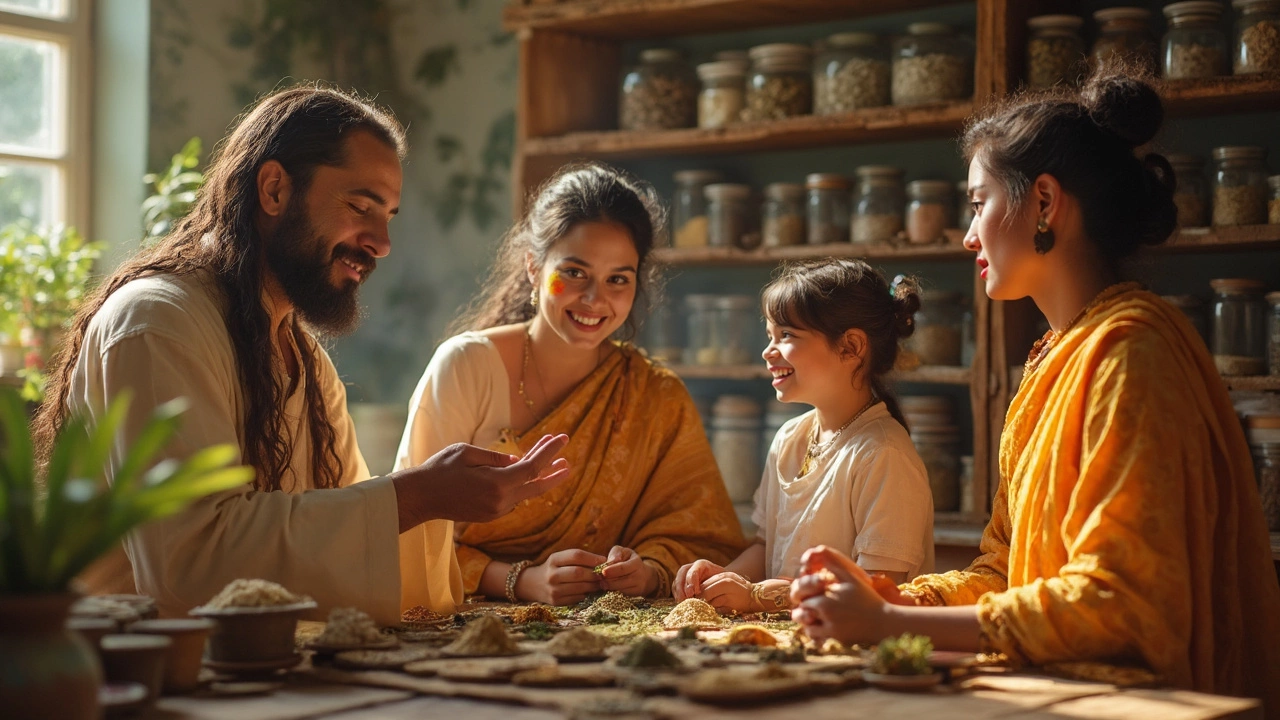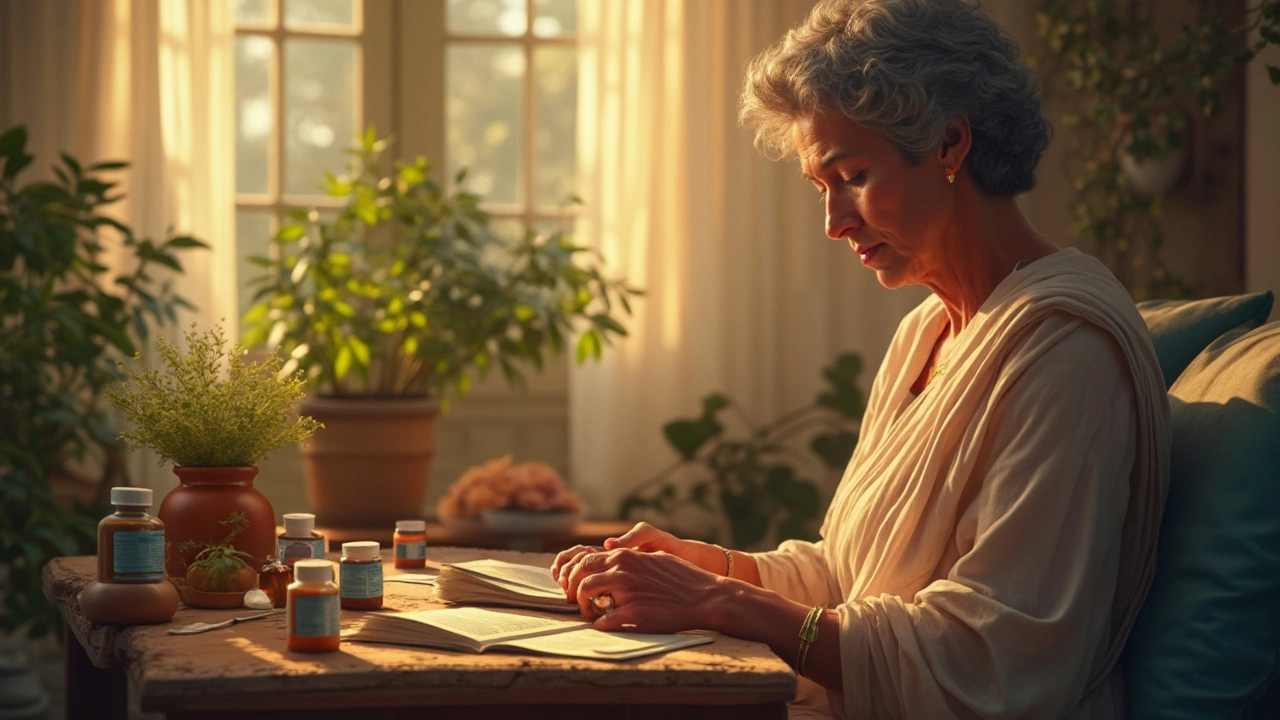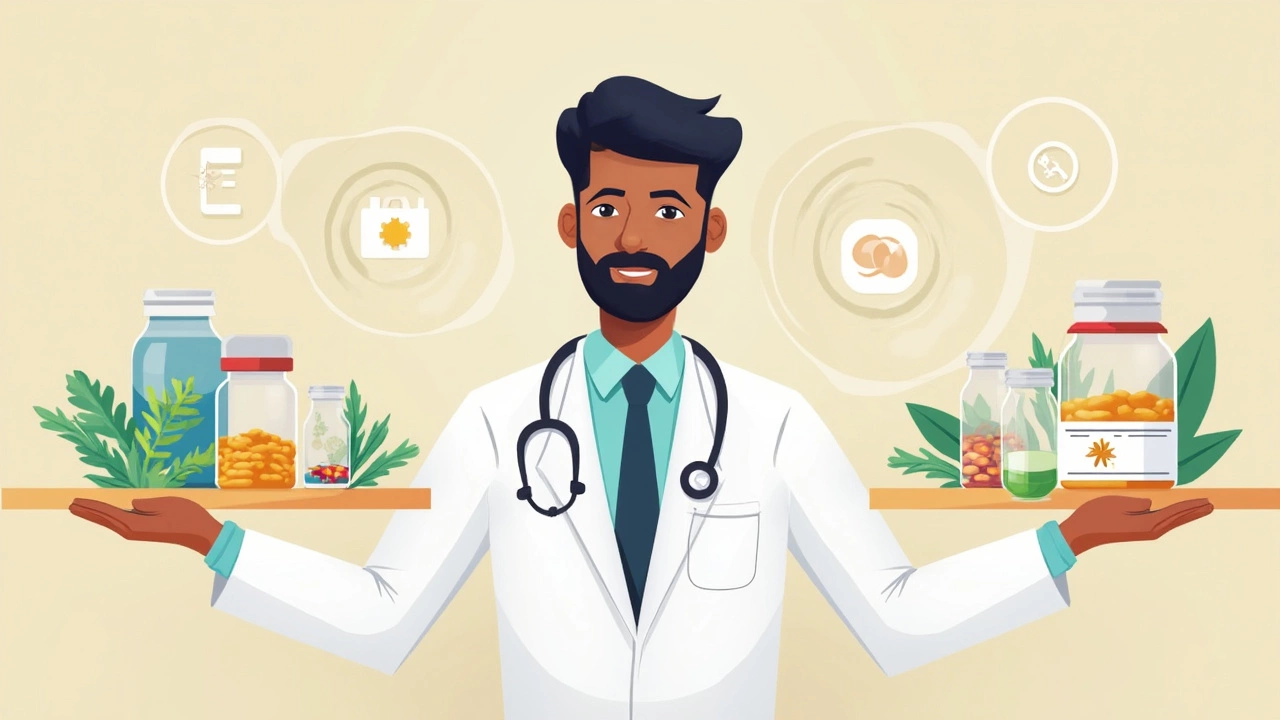
Picture this: you’re scrolling through social media, and yet again, someone’s raving about an ancient Indian remedy that helped their migraines, smoothed out their digestion, or even made their hair shinier. Ayurveda—one of the world’s oldest healing systems—is suddenly everywhere. It’s clinics in London, detox holidays in Kerala, and a shelf of mysterious herbal powders at your local health food store. But as demand for natural remedies climbs, so does the one big question: is Ayurveda safe?
The Roots and Reach of Ayurveda
Let’s strip away the hype and dig into what Ayurveda actually is. Born in India over 3,000 years ago, Ayurveda means “science of life” in Sanskrit. It’s a complete system—think diagnosis, prevention, therapy—focused on keeping your “doshas” (vata, pitta, kapha) in balance. This isn’t your average vitamin regimen. You’ll find everything from diets and yoga postures to herbal cocktails and even mineral concoctions.
Globally, millions swear by it. In the UK, Ayurveda’s had a steady rise. Google “Ayurvedic clinic Birmingham” and you’ll see dozens of practitioners. NHS surveys report about 20% of UK adults have tried some form of alternative medicine, with Ayurveda sitting among the top five choices. The World Health Organization even recognizes Ayurveda as a “traditional system” worth researching.
Ayurveda draws on a wild range of treatments: herbal pills, oils, massages, steam baths, and even leeches. And here’s a kicker—a staggering 80% of India’s rural population relies primarily on Ayurveda or similar systems for everyday healthcare needs. But just because something is ‘ancient’ doesn’t mean it’s free of side effects or risk.
Western science has started testing some Ayurvedic remedies. For example, turmeric—a staple spice in Ayurveda—has shown anti-inflammatory effects in randomized trials, but the big studies about safety were usually short-term and didn’t check long-term trouble.
If you walk into a Birmingham Ayurveda practice today, you’ll see practitioners using pulse diagnosis, inspecting your tongue, and crafting personalized remedies. These appointments cost anywhere from £50 to £200 depending on complexity. And people aren’t just paying for herbs—they’re paying for a holistic lifestyle approach, which is a huge part of Ayurveda’s appeal.
The global Ayurveda industry is booming. The market size is expected to hit 15 billion USD by 2028, according to Statista. This includes oils, teas, supplements, and beauty products. But heavy commercialization sometimes pushes quality and safety to the background—fake products, untested claims, and online shops with little regulation.
So, why do so many people flock to Ayurveda? For some, Western medicine hasn’t solved their issues—like IBS, bad sleep, or chronic joint pain. Some hope that “natural” means “safe.” But the truth is, natural remedies can carry risks, especially when quality, dosage, or interactions aren’t controlled.

The Real Risks: What’s Safe, What Isn’t?
Let’s get real about the risks. While Ayurveda is not inherently unsafe, its safety depends on three things: the treatment type, who prepares or prescribes it, and your personal health circumstances. Some Ayurvedic practices—like guided yoga or dietary tips—pose little to no risk. The problems crop up when remedies involve potent herbs, animal products, or minerals like lead, mercury, or arsenic—yes, really.
A 2015 study by the Centers for Disease Control (CDC) found that nearly one in five Ayurvedic herbal products sold online contained hazardous heavy metals. This isn’t just theory; there have been actual cases of lead poisoning linked directly to imported Ayurvedic remedies in the UK, US, and Australia.
Here’s a simple table summarizing well-known risks reported in scientific literature:
| Ayurvedic Component | Potential Risk | Reported Cases |
|---|---|---|
| Herbal mixtures | Drug interactions, allergic reactions | Frequent, variable severity |
| Mineral-based preparations (rasa shastra) | Heavy metal toxicity (lead, mercury, arsenic) | Numerous, some requiring hospitalization |
| Self-prescription from internet sources | Unknown contaminants, wrong dosage | Increasing with online sales |
Think about this: your body processes synthetic chemicals and natural ones in the same way. Some Ayurvedic plants—like aconite or datura—are so toxic in high doses that using them wrongly could be fatal, even though they’ve been traditionally used. And some herbs interact with prescription meds, altering their effects. For example, guggul (used for cholesterol) can interfere with blood thinners, and ashwagandha might tweak your thyroid hormones.
The British Herbal Medicine Association, along with the UK Medicines and Healthcare products Regulatory Agency (MHRA), warns consumers to avoid unregulated Ayurvedic imports. In 2022 alone, MHRA seized over 15 tons of illegal herbal products at UK borders, many containing contaminants or false ingredient lists.
And it’s not only about products. If an Ayurvedic practitioner isn’t properly trained, their advice might leave you at risk—delaying your cancer diagnosis, for example, or asking you to stop essential meds. Several tragic cases have hit UK headlines, where chronic illnesses got worse because people skipped medical treatment for alternative cures.
Not all Ayurvedic practitioners are charlatans. In India, a Bachelor of Ayurvedic Medicine and Surgery (BAMS) degree is a five-year, government-recognized program. But outside India, anyone can call themselves an Ayurvedic coach. In the UK, there’s no legal requirement for training or licensing. This means you have to be extra cautious when picking your practitioner.
So, is Ayurveda always dangerous? Absolutely not. Plenty of people use Ayurvedic diets, gentle herbal infusions, or yoga routines with benefits. The real danger comes from: 1) buying random powders online, 2) using high-dose, untested supplements, and 3) swapping real medical care for alternative remedies without sound advice.

How to Use Ayurveda Safely and Wisely
So, what’s the safest way to give your Ayurvedic curiosity a shot? Start with transparency and skepticism. Always let your GP know if you’re using any herbal or alternative medicine, especially if you have chronic conditions or take meds. It might feel weird, but being upfront can keep you from harmful drug interactions.
When shopping for Ayurvedic products, look for safety certifications. The gold standards are GMP (Good Manufacturing Practice) logos, EU certifications, or reputable UK health shop brands. Be wary of miracle claims or TikTok “detox” powders that list zero ingredients.
Pick a practitioner with solid credentials. Check if they’re on the register of the Ayurvedic Practitioners Association UK or have actual Indian BAMS degrees. Ask about their training and make sure they communicate with your regular doctor. If a practitioner tells you to ditch your inhaler, cancel chemo, or promises a cure-all for everything from cancer to the common cold—run for the hills. These are flashing red flags.
Keep in mind that Ayurveda is a mix of very safe and potentially risky therapies. If you focus on lifestyle changes—like better sleep, mindful eating, yoga—there’s little risk. Problems usually follow products with mysterious labels and big claims.
- Talk to your doctor before adding herbs, especially if you’re taking other meds.
- Buy from known retailers—UK, US, and EU supplements are more strictly tested for contamination than many imports.
- If a product doesn’t list all ingredients, or smells/looks different on your next purchase, avoid it.
- Watch for sudden symptoms: gut pain, jaundice, headaches after using a new supplement? Stop and seek help.
- The “natural” label isn’t a guarantee of safety.
For anyone who’s curious, Ayurveda can be a fascinating experiment—if you stick to the safer routes and don’t go off-grid with internet pills. Shadow, my retriever, once chomped on fallen “herbal” capsules my neighbor left on the walk path. He was fine, but it was a big wake-up call—don’t assume that just because something is plant-based, it’s harmless for you (or your pet).
Ayurveda isn’t good or bad in itself. It’s a toolkit. If you use the right tool for the right job, it’s helpful. Use a chainsaw for salad prep, and you’ll run into trouble. Smart choices, trusted sources, honest conversations with your healthcare team—that’s what keeps Ayurveda safe.





Rohan Talvani
I am a manufacturing expert with over 15 years of experience in streamlining production processes and enhancing operational efficiency. My work often takes me into the technical nitty-gritty of production, but I have a keen interest in writing about medicine in India—an intersection of tradition and modern practices that captivates me. I strive to incorporate innovative approaches in everything I do, whether in my professional role or as an author. My passion for writing about health topics stems from a strong belief in knowledge sharing and its potential to bring about positive changes.
view all postsWrite a comment